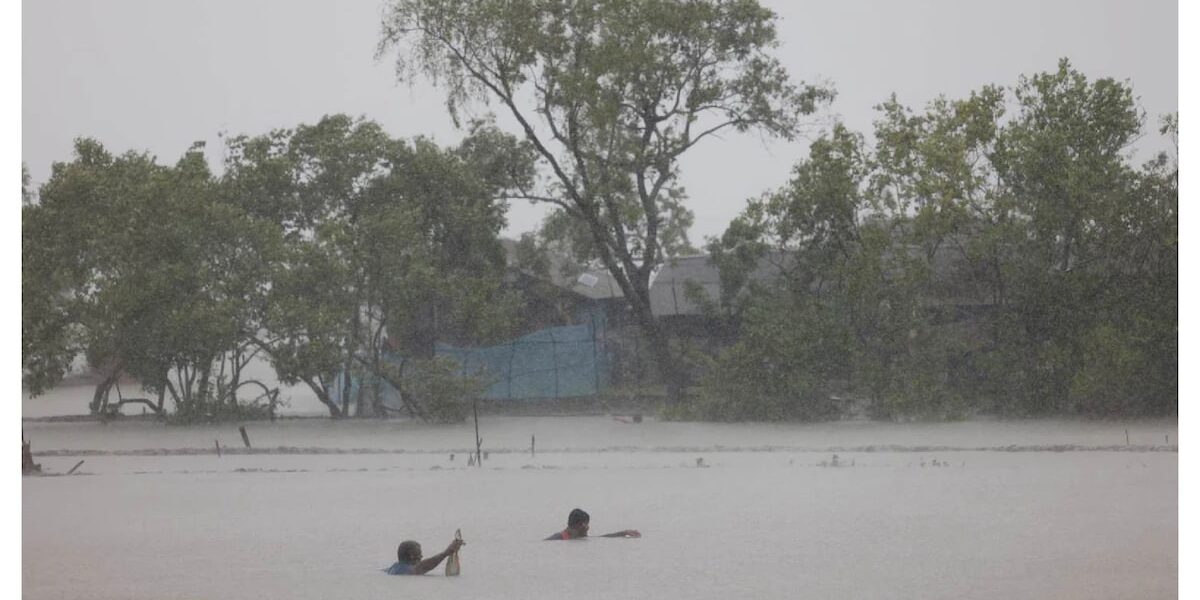Cyclone Remal causes extensive destruction and loss of life as it wreaks havoc in Bangladesh and India. Study the effects, the efforts made in response, and the lessons that might be applied to future disaster preparation.
At least sixteen people have lost their lives as a result of storm Remal, the first significant storm of the year, which devastated Bangladeshi and Indian coasts. Millions of people were left without electricity as severe winds and rain caused power lines to collapse. The severity of coastal areas’ increased susceptibility to severe weather events resulting from climate change is brought home by this disastrous occurrence.
Cyclone Remal’s Effects
With wind gusts of up to 135 km/h, Cyclone Remal released its wrath as it reached landfall, savagely attacking the Sagar Islands in West Bengal, India, and the southern port of Mongla, Bangladesh. Immediate and disastrous results followed:
- Deaths : People perished in the storm’s pandemonium as houses collapsed, walls fell, and people drowned. Some people succumbed to a fear of abandoning their houses and animals until it was too late, in spite of evacuation attempts.
The devastation caused by the cyclone’s fury on infrastructure was immense, resulting in a devastated landscape. With hundreds of telecom towers toppling and homes being completely destroyed, millions of people were left without access to energy or cell service. Power poles were also uprooted.
- Environmental Impact: Cyclone Remal wrecked devastation on the environment in addition to killing people and damaging infrastructure. Threatening the fragile ecosystems of the Sundarbans, which are shared by Bangladesh and India, were coastal regions flooded, embankments broken, and mangrove forests submerged.
Reaction and Injuries Attempts
Bangladesh and India both deployed resources during Cyclone Remal to meet the immediate needs of the impacted communities:
Approximately a million individuals were relocated to storm shelters during the Evacuation and Shelter phase, highlighting the need of preventative steps in reducing the likelihood of disasters.
- Power Restoration: Despite obstacles including downed power lines and damaged infrastructure, power officials worked nonstop to restore the flow of energy.
Humanitarian Assistance : In the middle of the crisis, groups like UNICEF intervened to provide vital help, particularly to vulnerable populations like children, guaranteeing access to food, medical treatment, and sanitary facilities.
Takeaways and Equipment for the Future
In light of Cyclone Remal’s aftermath, it is critical to consider the lessons learnt and improve readiness for future disasters in the areas affected:
- Climate Resilience: Increased frequency and severity of severe weather events are a result of climate change, underscoring the need of proactive adaption strategies and sustainable development techniques.
- Early Warning Systems: By facilitating prompt evacuation and readiness, investments in strong early warning systems and efficient communication channels may save lives.
Involvement of the Community: Increasing community resilience by awareness-raising, instruction, and involvement enables people to take preventative action and assist one another in times of need.
Verdict
The devastating force of nature and the pressing necessity for group action to solve the issues brought on by climate change are starkly brought to light by Cyclone Remal. It is critical to give resilience-building initiatives top priority and promote international collaboration as India and Bangladesh set off on their recovery journeys in order to address the rising danger posed by severe weather patterns.



